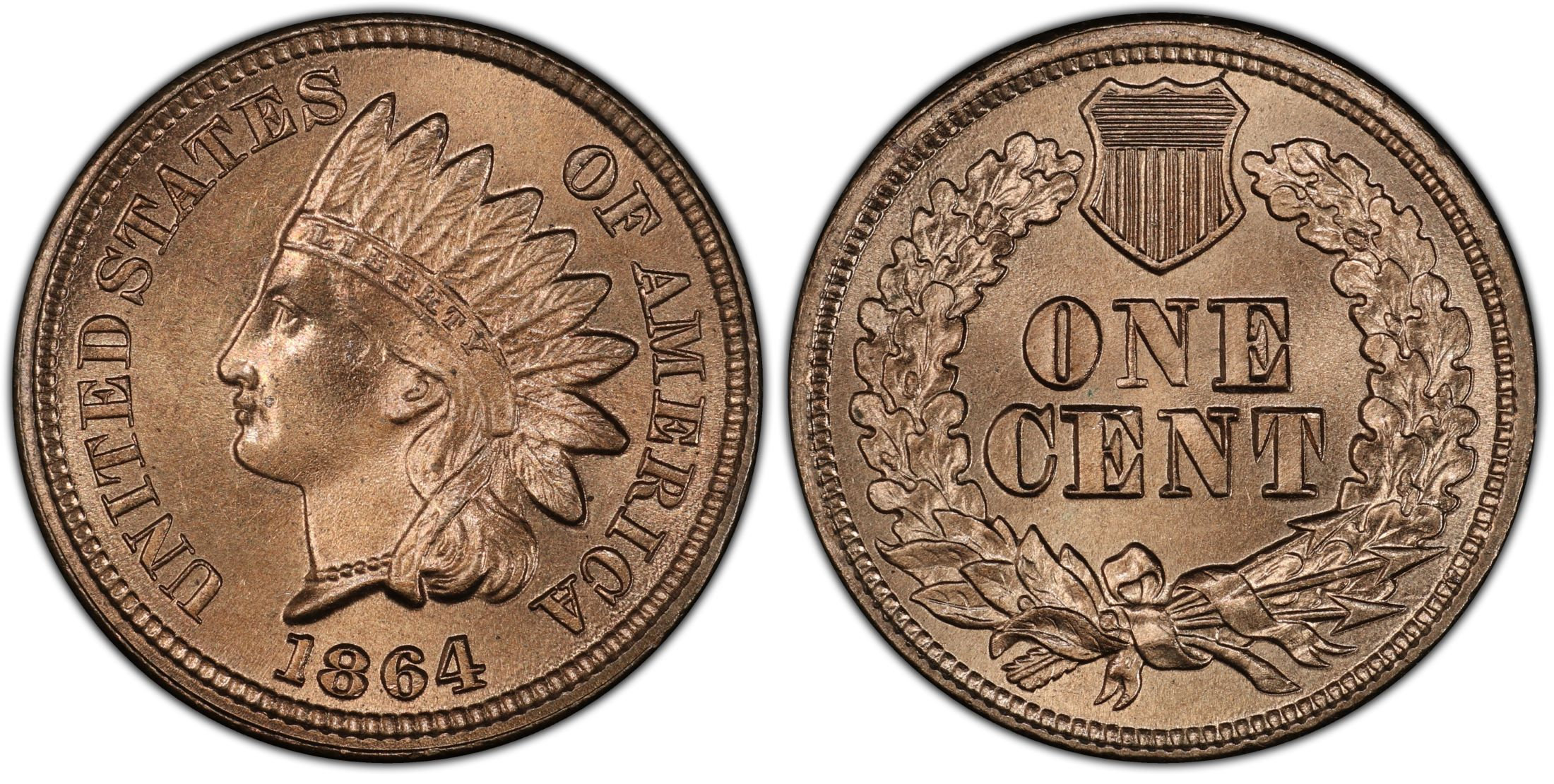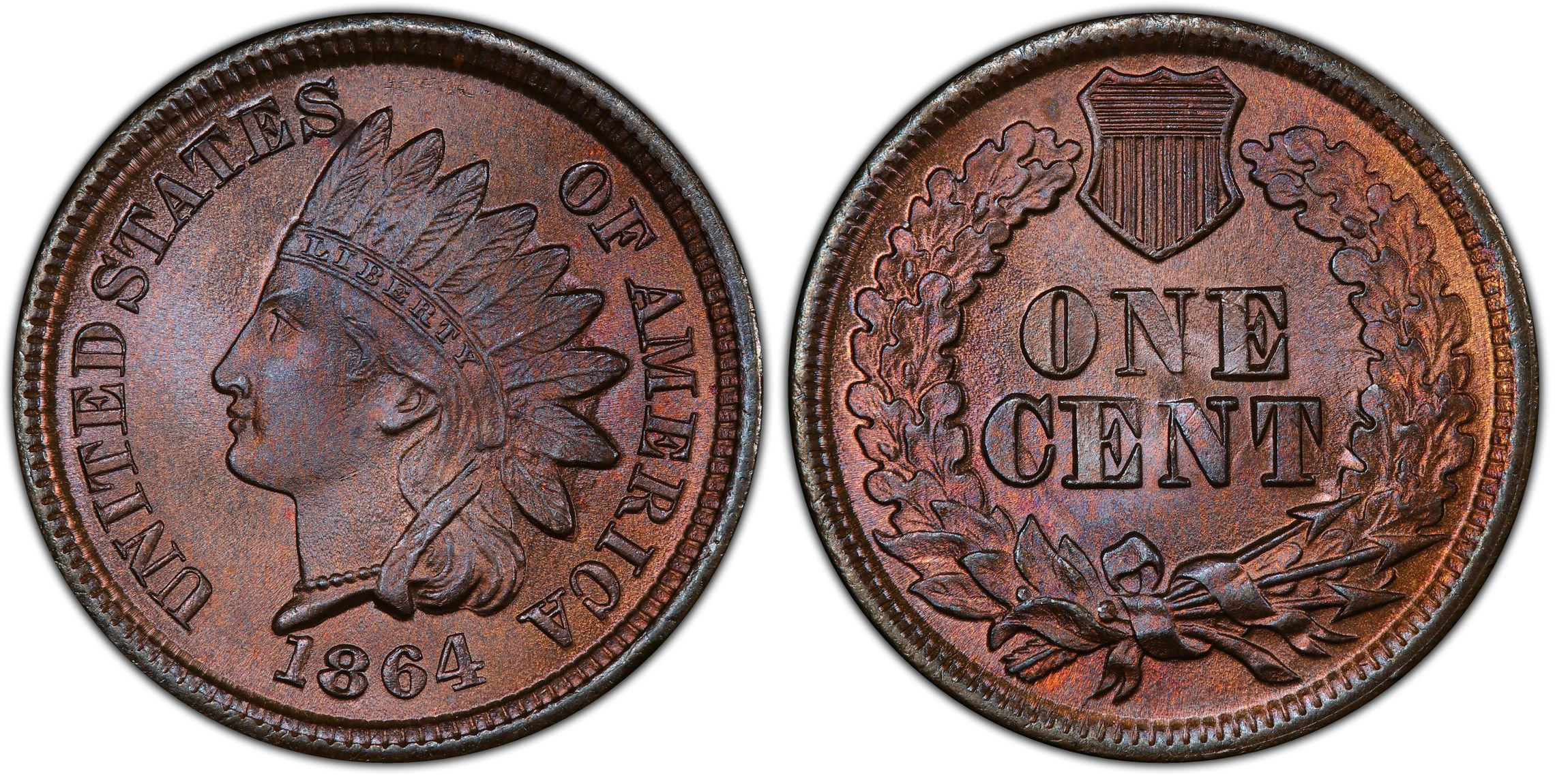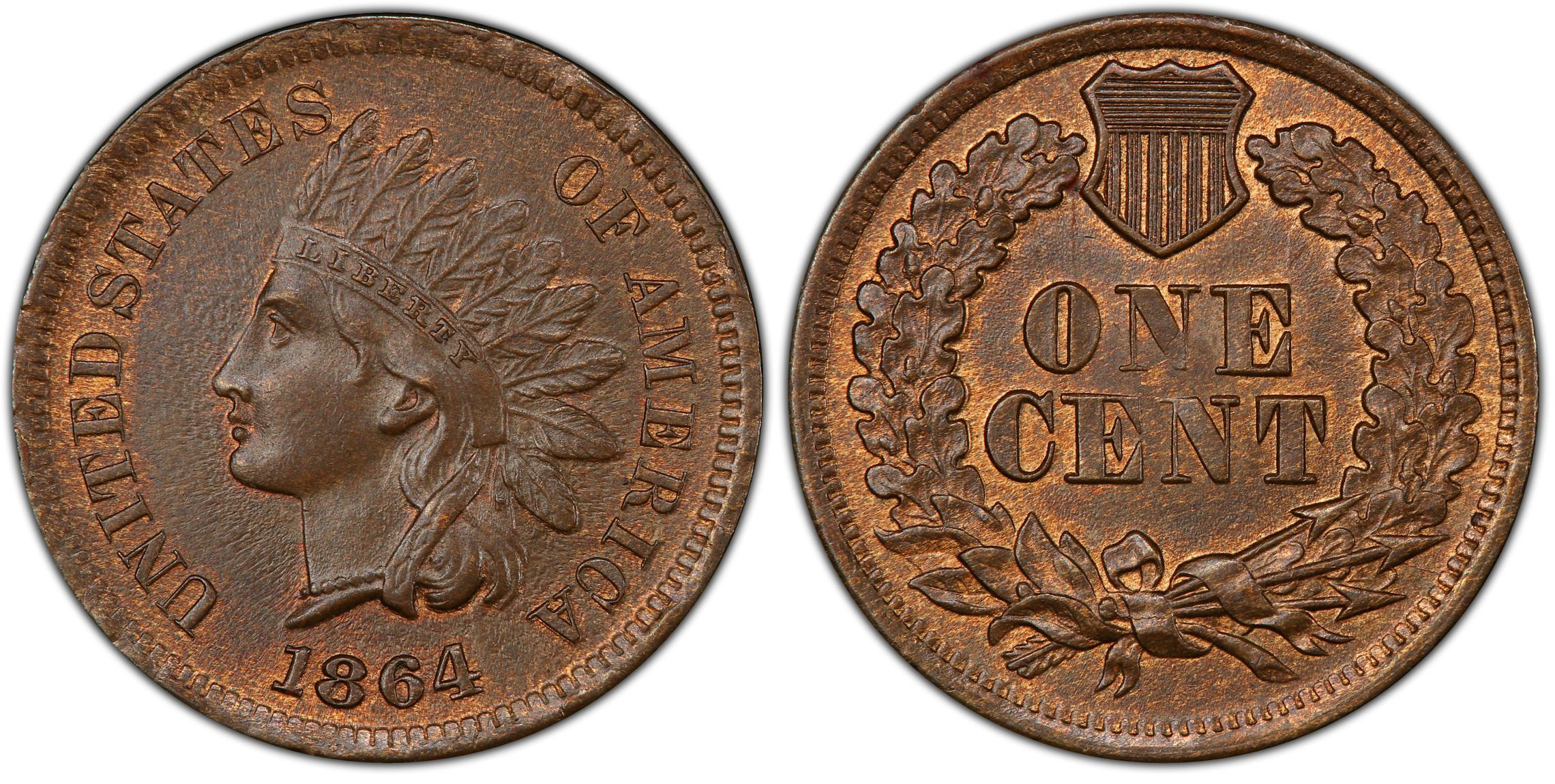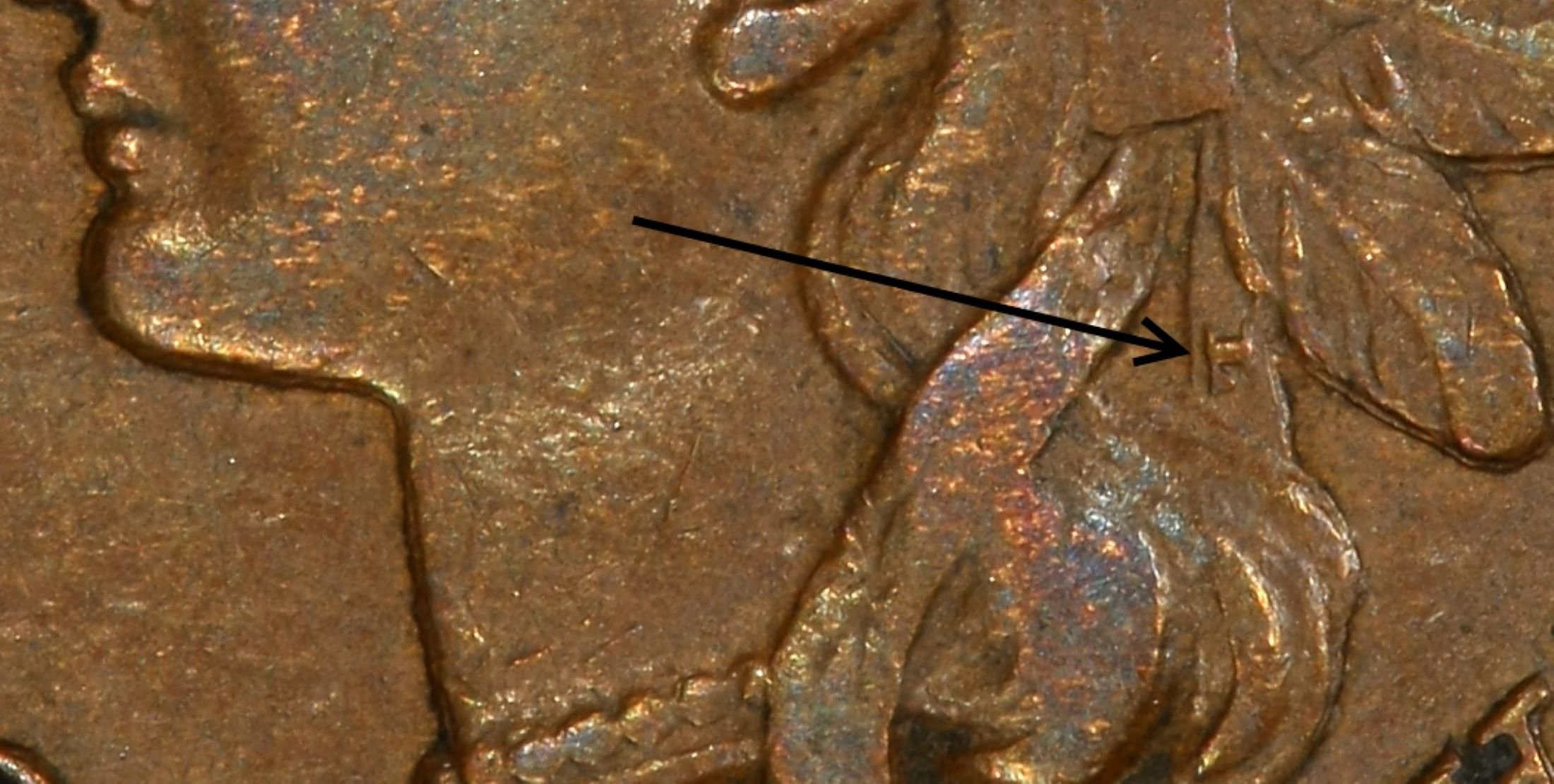Dug Double-struck 1864 Indian Cent!
This picture got forwarded to me tonight. The person who originally posted it has it visible on his public Facebook newsfeed. @EagleEye, @FredWeinberg, is this cool, or what? Anyone know this guy?

Not sure if this link will work.
John
Keeper of the VAM Catalog • Professional Coin Imaging • Prime Number Set • World Coins in Early America • British Trade Dollars • Variety Attribution
Keeper of the VAM Catalog • Professional Coin Imaging • Prime Number Set • World Coins in Early America • British Trade Dollars • Variety Attribution
0
Comments
Fascinating, but something about it troubles me.
Yep.
That was my thought too after a second or two.
The fact that two very experienced, veteran board members experience doubts says a lot about the state of the hobby. Authentication continues to grow in importance every day.
Reference Coin Facts

Edit to add:
Bronze

“L”


I have no doubts about its authenticity whatsoever. The surfaces and corrosion are consistent with bronze Indian cents from the 1860s that I have dug while detecting. The CoinFacts image above is a copper-nickel cent; it's not the same coin. The dug coin is either 1864 Bronze or 1864-L Bronze.
It seems plausible that a "defective" cent could have been intentionally discarded after several people refused to accept it in commerce. It would not likely have have had any numismatic value in the 1860s.
I bet it was a pocket piece!
If it was a pocket piece, it wasn’t for very long. There appears to be virtually no wear on the coin, indicating it was lost, or discarded, shortly after issuance.
Plenty of corrosion on that puppy, nice find none the less. Would like to see it after a soak in mineral oil. Peace Roy
BST: endeavor1967, synchr, kliao, Outhaul, Donttellthewife, U1Chicago, ajaan, mCarney1173, SurfinHi, MWallace, Sandman70gt, mustanggt, Pittstate03, Lazybones, Walkerguy21D, coinandcurrency242 , thebigeng, Collectorcoins, JimTyler, USMarine6, Elkevvo, Coll3ctor, Yorkshireman, CUKevin, ranshdow, CoinHunter4, bennybravo, Centsearcher, braddick, Windycity, ZoidMeister, mirabela, JJM, RichURich, Bullsitter, jmski52, LukeMarshall, coinsarefun, MichaelDixon, NickPatton, ProfLiz, Twobitcollector,Jesbroken oih82w8, DCW
I too detect, although not that much these days, and I think that makes a really cool find.
must be some soil minerals out there to make that blister. I have never pulled a indian cent that blistered in NJ, nice green ones, but no blisters.
I've dug a bunch of blistered Indian cents just like that one in upstate NY over the years. They tend to blister when they are buried in wet ground, like near a stream.
Cool find even as corroded as it is.
My concern is not with the corrosion, but with the inner edge of the off-center strike.
That’s very cool. Looks just as I would expect a ground find to look, and I’m not sure how people are critiquing the second strike when the whole coin is covered in blisters and corrosion. Very exciting for the finder!
Two possibilities I guess.
An error coin got lost in the ground, some guy found it later with a metal detector.
Someone made a die struck forgery, expertly damaged it until it would have very little value even if real, made up a story about digging it up, and managed to fool me on a message board. But some were too crafty to believe it!
Is there an "L" on the ribbon?
Rounded bust, so I'd say no.
Keeper of the VAM Catalog • Professional Coin Imaging • Prime Number Set • World Coins in Early America • British Trade Dollars • Variety Attribution
I agree. I don’t like the space between the first strike and the second one that is off-center. I am also concerned that the reverse of the second strike is blank. I think that there should be some reverse detail there.
** I think that there should be some reverse detail there.**
I wondered about that also, but the photo shown of the rev looks like it was prior to cleaning off the dirt, so I thought it was just obscured.....but it does appear it may be flat.
This piece is also shown on the White's Metal Dctectors Facebook home page. The folks at White's seem to acknowledge this D.J. Yost as somebody that they know.
Somebody faked the error in the 1860s to get 5 cents for it? Probably not. Maybe just someone playing around in the old blacksmith shop.
It's probably genuine. That dirt on the guy's fingers looks pretty real.
I will wait for the experts tagged in the OP... but sure looks like a dug coin. Cheers, RickO
I know the finder well. He is a member of the White's electronics field team. These individuals are hand picked & carefully vetted. Believe me, it's a piece he acquired directly from the earth.
No one doubts it came directly from the earth, just whether it is a mint made error or if someone did it with a hammer, anvil and little section of die in their shop.
This is all consistent with what you should expect from a coin that received it's second strike after another planchet had fed into the press.
Also, 1864 is a very common year for error cents. Not that that proves anything, but the coin isn't so remarkable that finding one in the ground should be all that surprising.
Doggedly collecting coins of the Central American Republic.
Visit the Society of US Pattern Collectors at USPatterns.com.
Check this out:
https://coins.collectors-society.com/wcm/CoinView.aspx?sc=424512
Doggedly collecting coins of the Central American Republic.
Visit the Society of US Pattern Collectors at USPatterns.com.
Like @rhedden, I've dug Indian cents from this era, and the deposits, corrosion, and "blistering" seem totally consistent with a detector find. It looks good to me, and wow, what a crazy-cool find! Other than a slightly off-center Peace dollar I read about someone finding in one of the detector mags almost 20 years ago, this is the only dug error coin I've seen.
Collector since 1976. On the CU forums here since 2001.
Hi! My name is Dominique Ivy and I a fellow field team member of DJ’s for White’s Electronics. I can personally vouch for DJ’s integrity and honesty. He dug this coin as is, and I am very happy for my friend and teammate.
Merry Christmas!
@Gourley1968
@Silverslingers
Welcome aboard....No one is questioning the fact that it is a 'dug' coin...the people above are questioning the authenticity of a mint made error as opposed to one 'crafted' after the mint. We do see that from time to time. Cheers, RickO
Agreed that an (apparent) blank back on the off-center strike could result from a second strike with that part of the coin atop a new blank planchet, though some part of the design of the first strike should have survived in a distorted form as it created a partial brockage in the second coin. This would become visible if the reverse corrosion could be removed, but from my familiarity with corroded coins of this nature it cannot be removed, so don't try.
However, as I said above, the denticled inner edge of the off-center strike looks suspicious. Where is the raised rim alongside those denticles?
On a different subject, look at the small picture with incrustation still on the off-center section. It has a different texture, and was obviously easily removed. Perhaps it was merely normal dirt that had not yet been removed.
The presence of similar corrosion bubbles atop the two "I's" in AMERICA could be a coincidence, as the corrosion bubbles below the two "R's" appear to be different.
I am not condemning the piece. I am saying that the unusual appearance of the denticled edge of the off-center strike merits further study.
Dug up while digging to China?
Check this out:
error-ref.com/?s=slide+zone
Awesome site, BTW!
Doggedly collecting coins of the Central American Republic.
Visit the Society of US Pattern Collectors at USPatterns.com.
That site is new to me.
Very nice error coin site, just awesome.
Thank you
Really? That's typically the go-to edu response post for newbies curious about what their error is on other forums & groups. Its Mike Diamonds baby, I think.
I know a dealer that had an Indian cent from the 1880s come back from NGC as an MS62 and triple struck. He claimed there were no others in the census. Is that a desirable error?
I will readily admit that the Chinese menace has made many of us far more vigilant and cynical than we used to be. Years ago I went to an EAC convention. A collector I knew called me over and asked me to pass judgment on a piece he had brought to sell, undoubtedly for big money. It was a 1796 No Pole half cent struck on a cut-down 1796 large cent with some of the undertype showing. I told him right away that the piece was a forgery because the copper looked nothing like the metal that was used to make coins of that era. It had the look of a modern U.S. Mint medal. He showed the piece to more copper people, and the verdict was unanimous. The piece was a fake of recent (Chinese) vintage. At that time the Chinese would make anything for a price and probably still do.
Since then the crooks have gotten smarter. They don’t go for the “home run” any more. They are happy with singles that might turn into triples if they can get “damaged coins” into legitimate top level grading holders. That’s the problem. Creating pieces that look like this does not take as long as you think. I did it with coins I left in my beach bag that were exposed to salty air.
So don’t be hard on us if some express reservations about a piece that looks like this. The new crook’s MO is to go for the “details grade” items and avoid that high grade, no problem items. Corrosion and marks can hide a lot of sins. When you see something like this, you have to go with what you see with respect to the details. The fact that a piece is green and bubbly from corrosion does not immediately authenticate it. You have to examine the diework and the strike evidence. This item might very well be genuine, but authentication requires more than working with some photographs.
The truth is that when a coin is this far gone, it may be impossible to authenticate it with certainty. It may, however, still be possible to prove that it's fake, if something about the coin is unquestionably not right. In this case, CaptHenway said that "The denticled inner edge of the off-center strike looks suspicious. Where is the raised rim alongside those denticles?" My position, backed up by the images at the links I provided, is that there's nothing suspicious about the strike. I could be wrong, of course. But assuming I'm right about the strike, I'd have to bet on the coin being real, for the same reasons as RealOne.
Doggedly collecting coins of the Central American Republic.
Visit the Society of US Pattern Collectors at USPatterns.com.
Sounds like a Gallery Mint product, not Chinese.
And here's an image of the real coin that inspired the project at the Gallery Mint.
Doggedly collecting coins of the Central American Republic.
Visit the Society of US Pattern Collectors at USPatterns.com.
A lot of discussion about this coin. Rightfully so. I believe the coin was in the ground. I don't think anyone alive today tampered with it, though.
There is good reason to discuss and examine the coin.
There ARE ways to make this error, or what is considered a close attempt at it.
It is not the veracity of the OP that is being questioned.
This board routinely tears things apart and tries to explain and make sense of them.
Don't feel bad. This is part of what we do here.
Pete
Hello all. Thanks for adding me in. I am the finder of this coin. This coin was dug at a colonial home site and was down about 8 inches with 3 iron nails in the hole with it. I was about 30 feet away from the original well on a hillside, very wet grounds. I would have to think the this coin was dropped around the the time it was issued being i see hardly any wear under the corrosion. The second strike is very strong on the face of the coin but stretched out around where the original rim would be, the backside second strike does have a image but I haven't cleaned it to see. Also the second strike pop out is very thin. I'll post up some more pics tonight. Feel free to ask any questions on it. Thanks.
DJ.
@DJDigs Welcometo the PCGS forums.
Thank you for providing the literal background on your find. Good luck in your future finds!
Andy, if Gallery Mint made that double stuck half cent, where is the “COPY” stamp?
Perhaps it is the corrosion. IMO, the coin is a100% genuine mint error.
IMO, the coin is a100% genuine mint error.
Today, an authenticator must be suspicious of everything. Excellent reproductions are made today and then harshly cleaned or chemically corroded. Same thing with ocean treasure that is salted w/corroded fakes. A coin as this that no one would EVER SUSPECT was a corroded counterfeit thirty years ago should be suspect.
I'd leave it EXACTLY as found because any conservation (including removing just the dirt) will diminish its historical context.
Who would have thought that there was money to made from counterfeiting common date Morgan Silver Dollars in Fine and VF? The Chinese have made a very large number of them.
I follow White's and would note that Dominique constantly celebrates cleaning her coin finds down to absolutely raw metal. Whatever she is, she knows NOTHING about numismatics.
Sorry, but I lose interest after a double strike as the others are too detracting.
Yes the triple struck IHC would be desirable.
Looks genuine to me - shame it's so
badly corroded.
Not a modern fake error, imo.
Fred, I yield to your expertise. Do you have any explanation for the lack of a rim outside the denticles?
Welcome, and thanks for telling us more about the coin and the context in which it was found. There are a lot of highly qualified eyes looking at coins here (and I don't mean me). One of the other forums you might enjoy here is the Metal Detecting forum.
Keeper of the VAM Catalog • Professional Coin Imaging • Prime Number Set • World Coins in Early America • British Trade Dollars • Variety Attribution
Tom - No,.